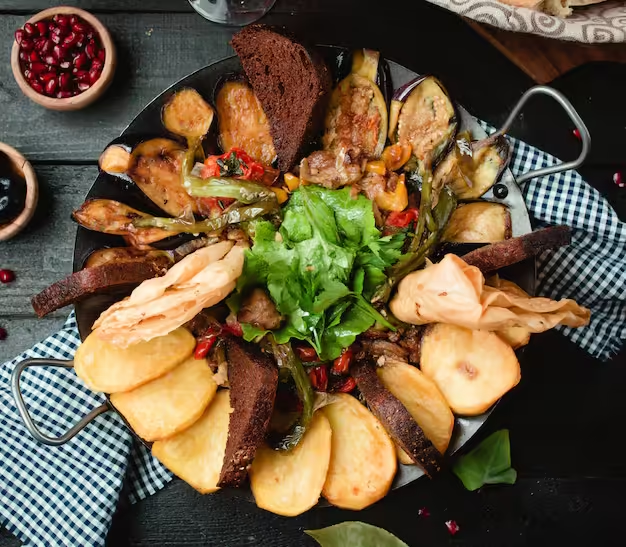Käänät, a traditional Finnish delicacy, holds a special place in the heart of Finland’s rich culinary heritage. With its unique flavors and deep cultural significance, it has been enjoyed for generations. As modern twists blend with ancient traditions, Kanata remains a symbol of Finnish pride. In this article, we explore the history, varieties, and preparation of Käänät, revealing why it continues to captivate both locals and tourists alike. Dive in and discover the essence of this timeless dish.
What is Käänät?
Käänät is a traditional dish from Finland, deeply rooted in the country’s culinary customs. It is made using simple, local ingredients that reflect the natural bounty of the region. The dish often features a dough filled with a variety of fillings, ranging from savory to sweet. Over time, Käänät has evolved with regional variations that showcase the diverse culinary styles found across Finland.
The origins of Käänät can be traced back to rural communities, where the dish served as a hearty meal for families. It was originally baked using methods that relied on natural wood-fired ovens, imparting a distinct flavor and texture. Though modern cooking techniques have simplified the process, the core essence of the dish remains unchanged.
Today, Käänät continues to be a staple at family gatherings, festivals, and celebrations, offering a taste of Finnish tradition with every bite. Whether enjoyed as a snack or part of a larger meal, it highlights the balance of flavors that characterize Finnish cuisine. Each bite brings together the warmth of freshly baked dough and the rich, comforting fillings that make this dish so beloved.
Cultural Significance of Käänät
Käänät holds a deep connection with Finland’s cultural identity. This dish is more than just a meal; it represents family traditions, local festivals, and the sharing of food as a community. Historically, Käänät was prepared for special occasions, including harvest festivals, winter gatherings, and important holidays. Its preparation and consumption often brought families and neighbors together, fostering a sense of unity and belonging.

The dish also plays a role in Finnish folklore and celebrations. In rural areas, it was traditionally baked as part of communal events, where people would gather around wood-fired ovens to bake large batches for festivities. The experience of making Käänät together helped reinforce bonds and create shared memories, making it an integral part of Finnish life.
Even today, Käänät continues to be a symbol of Finnish heritage, maintaining its presence at family dinners, cultural festivals, and national holidays. It reflects the values of hospitality and simplicity, with its hearty ingredients reminding people of Finland’s connection to the land. In modern Finland, the dish serves as a reminder of the past while still finding its place on contemporary tables, honoring the traditions of those who came before.
Types and Varieties of Käänät
Käänät comes in a range of types, reflecting the diversity of Finland’s regions and local ingredients. Each variation is rooted in the traditions of the area where it was first crafted, yet they all share a similar preparation method. Typically, Käänät can be divided into two broad categories: savory and sweet.
Savory Käänät often feature fillings like meat, potatoes, mushrooms, or fish, making them a satisfying meal. These variations are especially popular in the colder months, when hearty and warming food is appreciated. In coastal areas, Käänät filled with fish such as salmon are common, while in the countryside, root vegetables and local meats take center stage. The fillings are simple, allowing the quality of the ingredients to shine.
Sweet Käänät, on the other hand, are often enjoyed as a treat or dessert. They are filled with ingredients like berries, apples, or jams, bringing out the natural flavors of Finland’s forests and orchards. Lingonberries and cloudberries, both native to the region, are popular choices. These versions of Käänät are lighter than their savory counterparts but still offer a satisfying balance of sweetness and texture.
Some regions also put their unique twist on the dough, adjusting the thickness or incorporating special spices. These differences create a wide range of flavors and textures, ensuring that Käänät remains a versatile dish that can be adapted to any occasion. No matter the type, each variety of Käänät carries with it the essence of Finnish culinary tradition, making it both familiar and distinct across the country.
Traditional Preparation Methods
The preparation of Käänät follows a time-honored process that has been passed down through generations. The dish begins with the dough, which is usually made from basic ingredients such as flour, water, and sometimes a small amount of yeast or baking powder, depending on the region. The dough is rolled out into thin sheets, carefully shaped to hold the fillings without becoming too thick or overwhelming the flavors inside.
For savory varieties, the fillings often include locally sourced ingredients like meats, fish, potatoes, or mushrooms. These are typically cooked or seasoned before being placed inside the dough to enhance their flavor. For sweet versions, fruits such as berries or apples are used, with a touch of sugar or jam added for sweetness. The balance between the dough and the filling is key, ensuring that each bite contains the perfect blend of textures and flavors.
Once the dough is filled and folded, Käänät is traditionally baked in a wood-fired oven. This method gives the dish its characteristic crispness on the outside while keeping the inside soft and flavorful. The smoky aroma imparted by the oven adds depth to the overall taste. In modern kitchens, standard ovens are used, but the technique remains largely the same, maintaining the integrity of the original recipe.
Käänät is typically served warm, fresh from the oven, and can be enjoyed on its own or with a variety of accompaniments, such as soups or salads for the savory versions, or cream and coffee for the sweet ones. The simplicity of the ingredients and the careful preparation reflect the dish’s deep connection to Finnish culinary traditions. Each step, from the dough-making to the baking process, is a celebration of craftsmanship and local flavors.
Modern Twists on Käänät
Over time, Käänät has evolved from its traditional roots into a dish that welcomes modern culinary innovation. Contemporary chefs and home cooks alike have embraced the versatility of Käänät, experimenting with different fillings, preparation techniques, and presentation styles while still respecting its cultural significance.

One of the most noticeable changes is the introduction of new, globally inspired ingredients. While traditional fillings like meat, fish, and berries remain popular, modern variations now include more diverse ingredients such as exotic cheeses, roasted vegetables, and international spices. These updates have allowed Käänät to appeal to a wider audience, including vegetarians and those with more adventurous tastes.
Another area of experimentation lies in the preparation of the dough. In recent years, whole grain flours, gluten-free alternatives, and even puff pastry have been incorporated, offering new textures and flavors while catering to modern dietary preferences. The use of non-traditional cooking methods, such as grilling or frying instead of baking, also adds a creative twist to this classic dish.
Modern Käänät is not only served in homes but has also found its way into upscale restaurants and street food markets, where chefs take liberties in plating and flavor combinations. Some versions are paired with gourmet sauces or garnished with herbs and microgreens, bringing a contemporary flair to this age-old dish.
Despite these innovations, the heart of Käänät remains unchanged. It continues to represent comfort, tradition, and a connection to Finland’s culinary heritage, even as it adapts to the tastes and demands of the modern palate. Through these creative updates, Käänät has become a dynamic dish that bridges the gap between the past and the present, offering something for everyone to enjoy.
Health Benefits of Käänät
Käänät is not only a flavorful part of Finnish cuisine, but it also offers a range of health benefits, particularly when prepared with traditional ingredients. The dish often relies on whole foods like root vegetables, fish, and berries, which are staples of a healthy diet and rich in essential nutrients.
For savory variations, ingredients such as potatoes, mushrooms, and lean meats provide important vitamins and minerals, including B vitamins, potassium, and protein. These components contribute to maintaining energy levels, supporting muscle function, and promoting overall well-being. Fish-based Käänät, especially when made with fatty fish like salmon, offer omega-3 fatty acids, which are beneficial for heart health and brain function.
Sweet varieties of Käänät, often filled with berries like lingonberries or cloudberries, are high in antioxidants. These berries are known to reduce inflammation, improve cardiovascular health, and protect the body from oxidative stress. The natural sugars in these fruits also make Käänät a lighter dessert option compared to more processed alternatives.
In addition, the traditional preparation of Käänät, which typically involves baking, keeps the dish lower in fat compared to fried alternatives. This method allows for the preservation of the natural flavors and nutrients in the ingredients, making it a wholesome choice for those looking for balanced meals.
For those who prioritize plant-based or low-sodium diets, Käänät can be adapted to meet these needs by adjusting the fillings and seasoning. The flexibility of this dish means that it can cater to a wide range of dietary preferences without compromising its nutritional value. Whether enjoyed as a savory meal or a sweet treat, Käänät offers a balanced and nutritious option for all.
Where to Find Authentic Käänät
Finding authentic Käänät in Finland is not difficult, as it remains a staple in both local homes and eateries throughout the country. Many bakeries, especially those in smaller towns and rural areas, continue to make Käänät using traditional methods and locally sourced ingredients. These are often the best places to experience the dish in its most authentic form, as the recipes are passed down through generations and remain true to their origins.
In urban areas like Helsinki, restaurants that focus on Finnish cuisine often include Käänät on their menus. Some of these places offer both traditional versions and modern interpretations, allowing visitors to experience the full range of this dish’s versatility. Street food markets and local festivals are also good spots to find freshly made Käänät, especially during cultural celebrations or regional events.
For travelers seeking a more hands-on experience, many regions in Finland host cooking workshops where participants can learn how to make Käänät from scratch. These workshops not only teach the traditional methods of preparation but also give insight into the cultural significance of the dish.
Another option is visiting local farms or cooperatives that focus on preserving Finnish culinary traditions. These establishments often sell homemade Käänät, sometimes with ingredients grown or harvested directly from the surrounding area, providing a truly local experience.
Whether in a fine dining setting, a local bakery, or a rural kitchen, the opportunity to enjoy authentic Käänät is abundant across Finland, giving both locals and visitors the chance to savor this cherished dish.
Käänät: A Sustainable Delicacy
Käänät, with its reliance on locally sourced and seasonal ingredients, aligns well with principles of sustainability. The traditional fillings such as potatoes, fish, and berries reflect Finland’s natural resources and the historical practice of making the most of what is available. This focus on local ingredients reduces the need for transportation and the associated carbon footprint, making Käänät an environmentally friendly choice.

The dish’s adaptability also supports sustainability. It encourages the use of a wide range of ingredients, depending on what is in season. For instance, root vegetables and mushrooms are abundant in the colder months, while fresh berries and herbs are more common during the summer. This adaptability helps avoid food waste, as cooks can make use of what is freshest and most readily available.
In rural areas, Käänät often reflects the self-sufficiency of the local population. Many families grow their own produce, raise animals, and forage for ingredients like mushrooms and berries, integrating Käänät into a lifestyle that prioritizes minimal environmental impact. These practices continue today in many Finnish households and communities, further linking the dish to sustainable living.
Additionally, the traditional methods of preparing and baking Käänät, particularly using wood-fired ovens, can be energy-efficient when done in large batches, supporting a more sustainable approach to cooking. This long-standing connection between food, community, and the environment helps keep the preparation and enjoyment of Käänät in harmony with nature.
Käänät remains an excellent example of how a beloved traditional dish can contribute to environmental sustainability while still providing a rich culinary experience. By using local, seasonal ingredients and eco-friendly preparation methods, Käänät embodies the values of both heritage and responsibility toward the environment.
Conclusion
Käänät, as both a culinary delight and a cultural treasure, showcases the depth of Finnish tradition. From its humble origins in rural kitchens to its presence on modern tables, this dish reflects the values of community, sustainability, and simplicity. Whether enjoyed in its savory or sweet forms, Käänät connects generations through its flavors and preparation methods, while evolving to fit contemporary tastes. As a symbol of Finnish heritage, it continues to offer a taste of the past while embracing the future, making it a timeless staple in Finnish cuisine.
FAQs
1. What is Käänät?
Käänät is a traditional Finnish dish made from dough filled with savory or sweet ingredients, such as meat, fish, vegetables, or berries. It has been enjoyed in Finland for generations and is a symbol of Finnish culinary heritage.
2. How is Käänät traditionally prepared?
Käänät is typically made by rolling out dough, filling it with various ingredients, and then baking it in an oven. Traditionally, it was baked in wood-fired ovens, which gave it a distinct smoky flavor, though modern kitchens use standard ovens.
3. Can Käänät be adapted for modern diets?
Yes, Käänät is versatile and can be adapted for different dietary preferences. Gluten-free flours, plant-based fillings, and other ingredient substitutions allow it to cater to modern tastes while maintaining its traditional essence.










